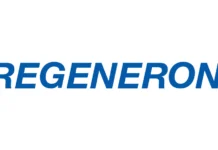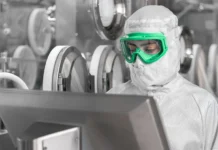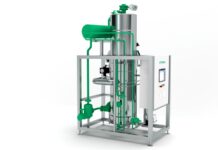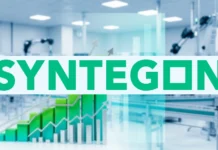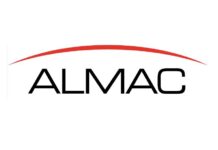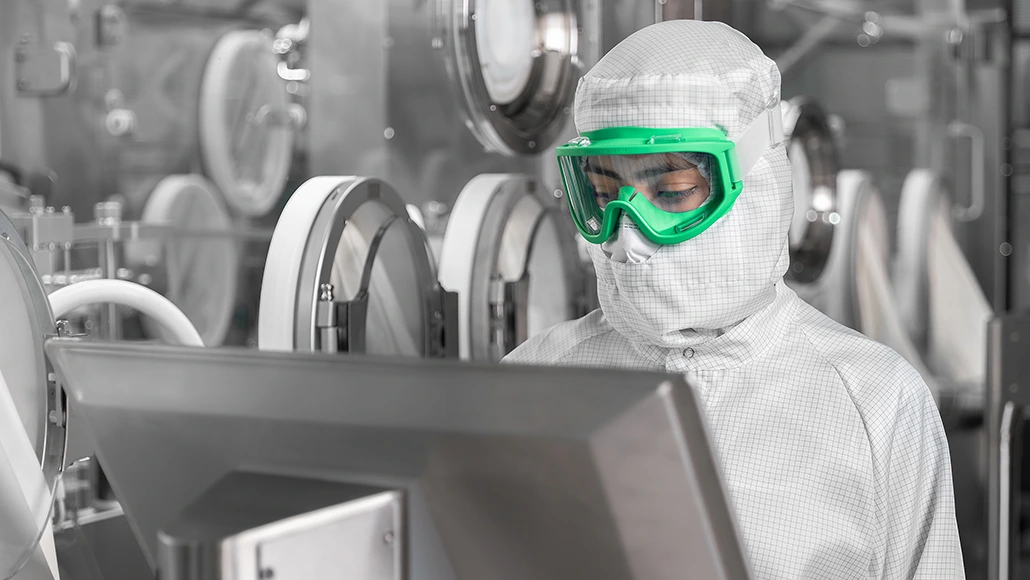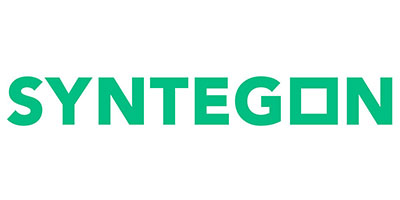Vial fill-finish operations are changing faster than ever. New regulations such as the revised Annex 1 demand higher automation and less manual intervention, while new products – from large-scale vaccines to small-batch biologics – require significantly more flexible filling equipment and processes. Pharmaceutical manufacturers and CDMOs who want to remain competitive in the long-term need solutions that are future-ready today.
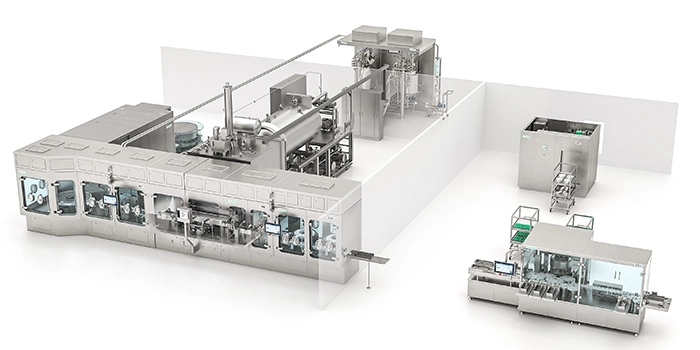
Vials are among the most commonly used packaging formats for highly innovative pharmaceuticals – and represent a significant economic opportunity for pharmaceutical manufacturers and CDMOs. They are under increasing pressure to deliver a wider range of products with differing characteristics, dosage forms, and batch sizes within ever shorter timeframes. This requires highly flexible lines that minimize overproduction and enable fast time-to-market – and allow pharmaceutical companies to adapt swiftly. But what exactly does flexibility mean in vial filling today and tomorrow, what are the key drivers, and how should the ideal vial filling line be designed?
A rapidly changing pharmaceutical landscape
Growth in the liquid vial market is driven by two trends. Large-scale drugs such as semaglutide and vaccines require high-speed, high-output fill-finish equipment, while many emerging biopharmaceuticals and antibody-drug conjugates (ADCs) are produced in small batches or even tailored for individual patients. Applications range from large formats for multi-dosage needs to small single-dose vials. Especially new complex products vary in viscosity, sensitivity, and other characteristics, demanding ever higher flexibility. At the same time, regulations set ever-higher standards for sterile fill-finish operations.
As a result, manufacturers – and especially CDMOs, whose role in fill-finish operations is set to grow over the coming years – increasingly seek equipment that combines high output with versatility and regulatory readiness. Shifting between batches of different volumes and complex products requires high operational flexibility. Modern fill-finish lines should be able to process several vial sizes on a single platform. Beyond format compatibility, reducing downtime through rapid, automated, tool-less changeovers and optimized cleaning is critical. A modular design adds scalability and allows the integration of components such as freeze-dryers or isolators without extensive system changes, securing long-term production efficiency.
What hinders fill-finish flexibility?
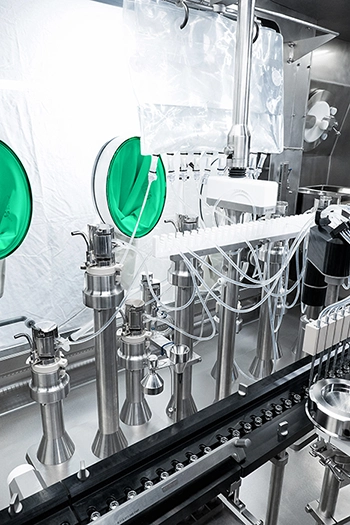
Despite the rising demand for adaptable production, many fill-finish lines still face bottlenecks that limit flexibility, including manual changeovers, inefficient cleaning, and non-standardized interfaces. Manual format changes extend downtime and increase the risk of human error, potentially causing delays or batch loss. Cleaning is another constraint: In aseptic processing, it must be thorough, validated, and well documented. Otherwise, it can become a significant source of downtime and administrative effort.
Non-standardized interfaces further restrict flexibility, as they hinder the fast integration of novel or newly required technologies such as freeze-dryers or barrier systems. The latter, for example, are now explicitly recommended by EU GMP Annex 1 to improve product safety by minimizing manual intervention. Hence, manufacturers will require at least restricted access barrier systems (RABS) for new product approvals, while new lines should include isolators by default. As demand for lyophilized products and higher containment grows, standardized interfaces will be critical. Without them, retrofits become slower, costlier, and hinder rapid capacity expansion, leaving manufacturers less able to meet evolving market needs.
From filling technologies to automation
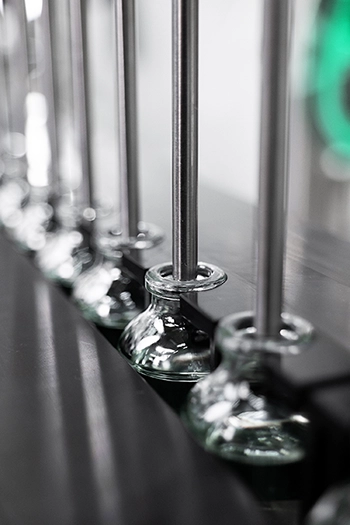
To overcome these limitations, the focus should be on four key design principles. Firstly, meeting diverse demands – from sensitive biopharmaceuticals to high-volume products – requires flexible filling technologies. This means the ability to run multiple systems on one machine and change parts with minimal downtime. Both stainless steel multi-use and single-use solutions have their roles, while truly flexible lines can support various filling systems – from peristaltic, rolling diaphragm, and rotary valve piston pumps to mass-flow and time-pressure filling, with combi stations handling several systems simultaneously to save space and time.
Yet no matter the number of supported filling technologies, vial fill-finish lines can only deliver on their promise if changeovers are just as reliable. The most effective way to address this is through automated, tool-less changeovers. Compared to manual or semi-automated approaches, these systems are not only less error-prone, but also significantly faster. Gentle or even contactless transport of the vials is a good example of this principle. To truly unlock flexibility, however, automation must extend beyond the filling station. Each process step of the fill-finish line, from cleaning and sterilization to freeze-drying and stoppering, should enable fast, automated adaptation.
Integrated cleaning and seamless integration
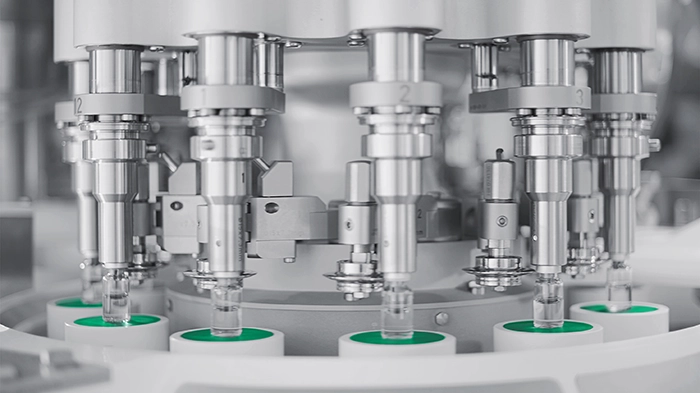
Most changeovers require cleaning and sterilization, with few exceptions for single-use or non-contact parts. Optimizing these processes is a key lever to reducing downtime and enhancing line flexibility. Many modern vial fill-finish lines feature integrated CIP/SIP systems that automatically clean and sterilize equipment without disassembly, saving time and ensuring compliance across products. Since Annex 1 places particular emphasis on filter testing using PUPSIT (pre-use post-sterilization integrity testing), manufacturers should opt for integrated or easily integrable solutions to ensure maximum flexibility.
Finally, creating future-proof flexibility is best achieved with a modular vial filling line design and seamless integration possibilities. With rising regulatory demands, modularity is far more than a design choice – it is a long-term safeguard, enabling adaptability to new requirements. For example, a modular line with standardized interfaces allows containment upgrades even for systems originally built without barrier technology. Modularity and standardized interfaces also make it possible to add capabilities such as freeze-drying, giving pharmaceutical manufacturers and CDMOs the freedom to expand their product portfolio over time.
Ensuring future-proof vial fill-finish operations
Flexible vial filling lines are a strategic investment that delivers long-term value. They significantly increase equipment availability and overall efficiency, resulting in a higher return on investment. Production assets are better utilized, while pharmaceutical manufacturers and CDMOs can respond more dynamically to evolving market needs and regulatory shifts. But true flexibility goes beyond selecting the right equipment. It also requires a partner who understands the broader context of pharmaceutical production and can support customers throughout all process steps and across the entire machine lifecycle.
Choosing a strategic partner like Syntegon with a design philosophy that supports these goals and provides seamless processing equipment with flexibility at its heart is a key success factor. From formulation to filling and closing, sterilizing, freeze-drying, and inspection at any containment level, Syntegon offers seamlessly integrated, vial fill-finish lines. Moreover, spare parts, maintenance kits, and expert consulting make a real difference in daily operations. This way, pharmaceutical manufacturers and CDMOs are ready to meet today’s needs – and tomorrow’s opportunities.



